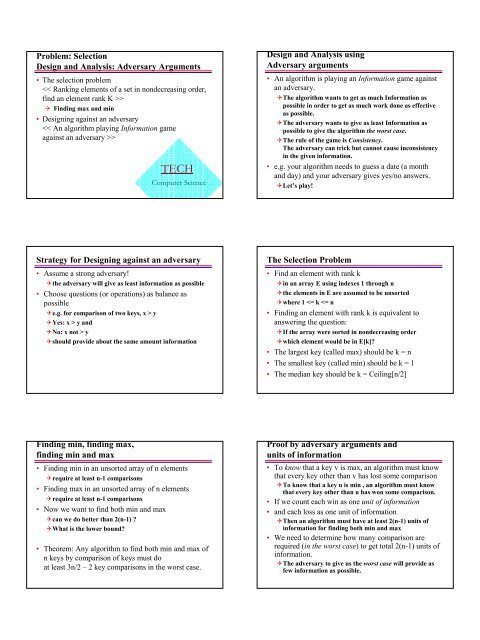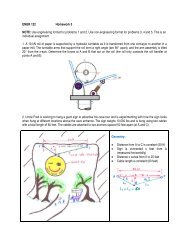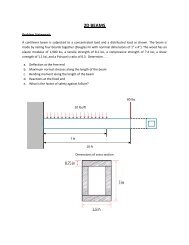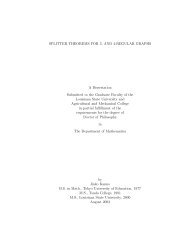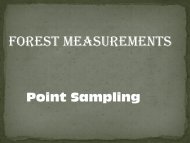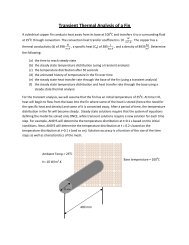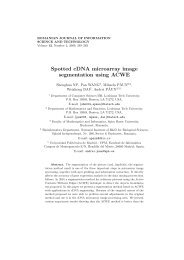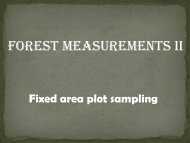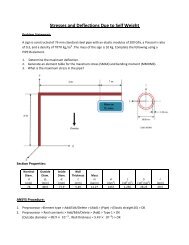Problem: Selection Design and Analysis: Adversary Arguments ...
Problem: Selection Design and Analysis: Adversary Arguments ...
Problem: Selection Design and Analysis: Adversary Arguments ...
Create successful ePaper yourself
Turn your PDF publications into a flip-book with our unique Google optimized e-Paper software.
<strong>Problem</strong>: <strong>Selection</strong><strong>Design</strong> <strong>and</strong> <strong>Analysis</strong>: <strong>Adversary</strong> <strong>Arguments</strong>• The selection problem> Finding max <strong>and</strong> min• <strong>Design</strong>ing against an adversary>TECHComputer Science<strong>Design</strong> <strong>and</strong> <strong>Analysis</strong> using<strong>Adversary</strong> arguments• An algorithm is playing an Information game againstan adversary.The algorithm wants to get as much Information aspossible in order to get as much work done as effectiveas possible.The adversary wants to give as least Information aspossible to give the algorithm the worst case.The rule of the game is Consistency.The adversary can trick but cannot cause inconsistencyin the given information.• e.g. your algorithm needs to guess a date (a month<strong>and</strong> day) <strong>and</strong> your adversary gives yes/no answers.Let’s play!Strategy for <strong>Design</strong>ing against an adversary• Assume a strong adversary!the adversary will give as least information as possible• Choose questions (or operations) as balance aspossiblee.g. for comparison of two keys, x > yYes: x > y <strong>and</strong>No: x not > yshould provide about the same amount informationThe <strong>Selection</strong> <strong>Problem</strong>• Find an element with rank kin an array E using indexes 1 through nthe elements in E are assumed to be unsortedwhere 1
The adversary strategyto give us the worst caseOur strategy to gain as must information• Our algorithm can do at most n/2 comparisons ofpreviously unseen keyssuppose for the moment that n is eveneach of these comparison give us 2 units of informationnow we have n units of information• Our algorithm need total 2(n-1) = 2n – 2, so now weneed n – 2 additional units of informationfor each other comparison we gain at most one unit ofinformationso we need at least n – 2 additional comparisons• In total our algorithm requires at least n/2 + n – 2comparisons. For n is odd, 3n/2 – 3/2 comparisons areneeded. QED<strong>Design</strong> an algorithm to find min <strong>and</strong> max• Now we know the lower bound (in the worst case)Can we design an algorithm to reach the lower bound?• Exercisedesign an algorithm to find both min <strong>and</strong> maxthe algorithm should do at most (about) 3n/2comparison (in the worst case) for a problem size of nelements


